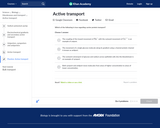
This quiz allows students to check their understanding of active transport processes.
- Subject:
- Science
- Material Type:
- Assessment
- Provider:
- Khan Academy
- Date Added:
- 03/20/2017

This quiz allows students to check their understanding of active transport processes.
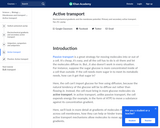
This online tutorial covers primary and secondary active transport.
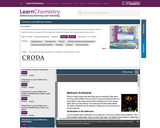
This article can be used with the activity "Chemistry in your Bathroom" or independently. In this article students will learn about surfactant, emulsifying agents, and surface tension. This lesson is great for teaching about the difference between hydrophyllic and hydrophobic molecules.
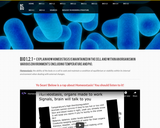
This webpage provides resources, including a lab activity, to aid student understanding of homeostasis and how it is maintained in the cell.

CK-12 Biology Workbook complements its CK-12 Biology book.
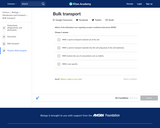
This quiz allows students to check their understanding of transport mechanisms.
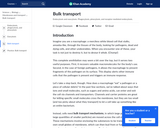
This online tutorial covers transport mechanisms, including endocytosis and exosytosis, phagocytosis, pinocytosis, and receptor-mediated endocytosis.

Students design, conduct, and analyze a controlled experiment testing the effects of alcohol on the worm C. elegans.

Cell Transport and HomeostasisGiving us credit when you use our content and technology is not just important for legal reasons. When you provide attribution to CK-12 Foundation, you support the ability of our non-profit organization to make great educational experiences available to students around the world.Our Creative Commons License welcomes you to use our content and technology when you give us attribution. If you have any questions about our policies, contact us at support@ck12.org

In this lesson, students read about different types of passive transport, how different types of active transport occur, and the role of cell transport in homeostasis.
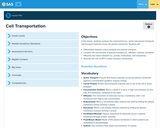
In this lesson, students compare the mechanisms (i.e. active and passive transport) that transport materials across the plasma membrane.

This activity demonstrates diffusion, osmosis, and active transport through 12 interactive models. Students will begin by following the path of a molecule of dye in water, create concentration gradients on either side of a cell membrane and watch the movement of substances in and out of a cell, and monitor the movement of oxygen into red blood cells with and without hemoglobin.
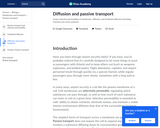
This online tutorial covers selective permeability of membranes, diffusion, and facilitated diffusion.

Students investigate diffusion. They will set up cubes of agar jelly and see how far liquid penetrates them by diffusion over five minutes. Then they will calculate surface area to volume ratio for cubes of different sizes and consider the problems faced by large organisms.

This lesson provides an overview of the major factors that affect plant growth including: water, air, temperature, light and nutrients. If sticking to the basics, the lesson can be taught using all factors except nutrients. However, nutrient information is provided for longer class periods.

In this lab activity, students will investigate the movement of different materials across the cell membrane of a raw egg once the egg shell has been dissolved in vinegar. Students will develop an independent investigation in which they will choose a liquid that will re-hydrate the egg that has been dehydrated.

Students will collect data on the cooling of water in two different test tubes- one wrapped in wet newspaper and one in dry newspaper. They then identify trends in their data, make predictions, and describe how their experiment is similar to the body's perspiration. The task assesses students' abilities to make simple observations, gather and collect data, identify trends and make predictions, and to demonstrate their understanding by relating the experiment to real life.
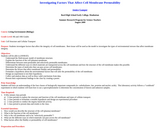
In this lesson, students investigate factors that affect the integrity of cell membranes. Beet tissues will be used as the model to investigate the types of environmental stresses that affect membrane integrity.

In this lesson, students investigate the effect of soaking a gummy bear in water. They collect measurements of height, width, and mass before and after the soaking of the candy overnight. Students calculate percent change for each factor and graph the data on a bar graph. They then develop a new, testable question and follow through with the new experiment. A copy of the instructions and rubric is provided.

Students will read a passage and write answers to questions about the passage. This resource supports English language development for English language learners.